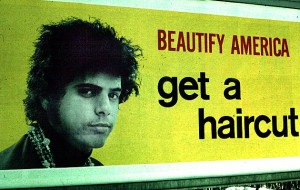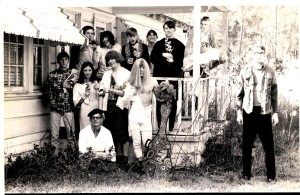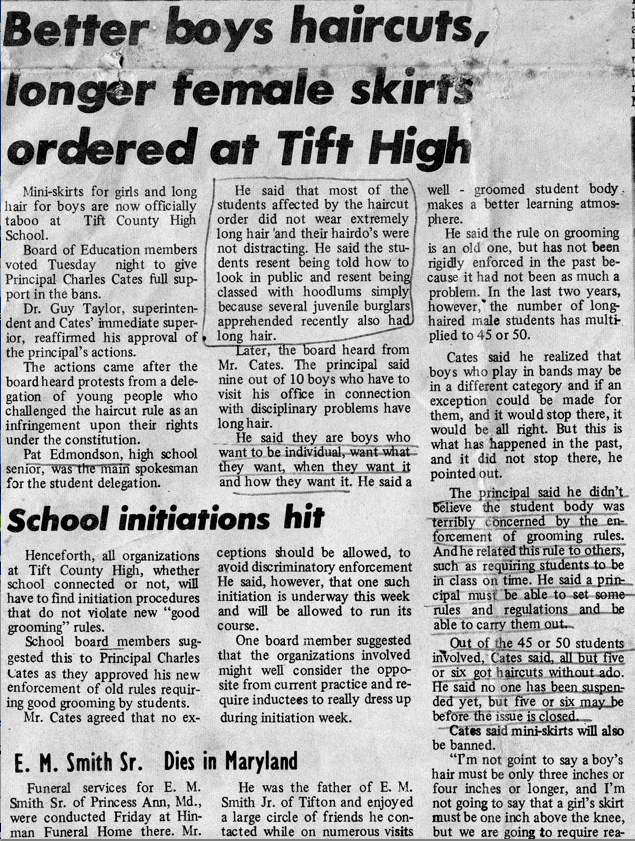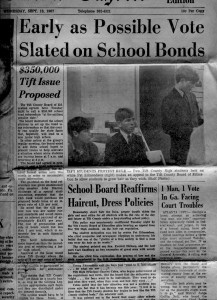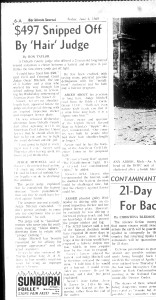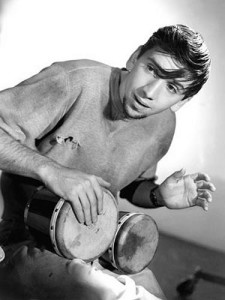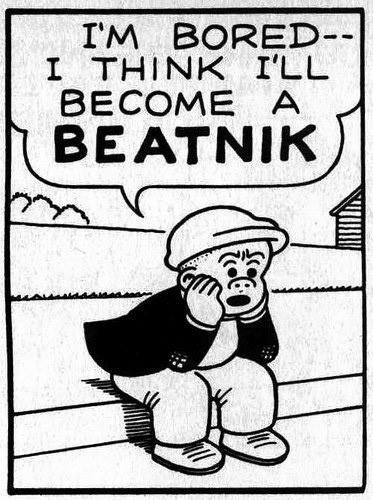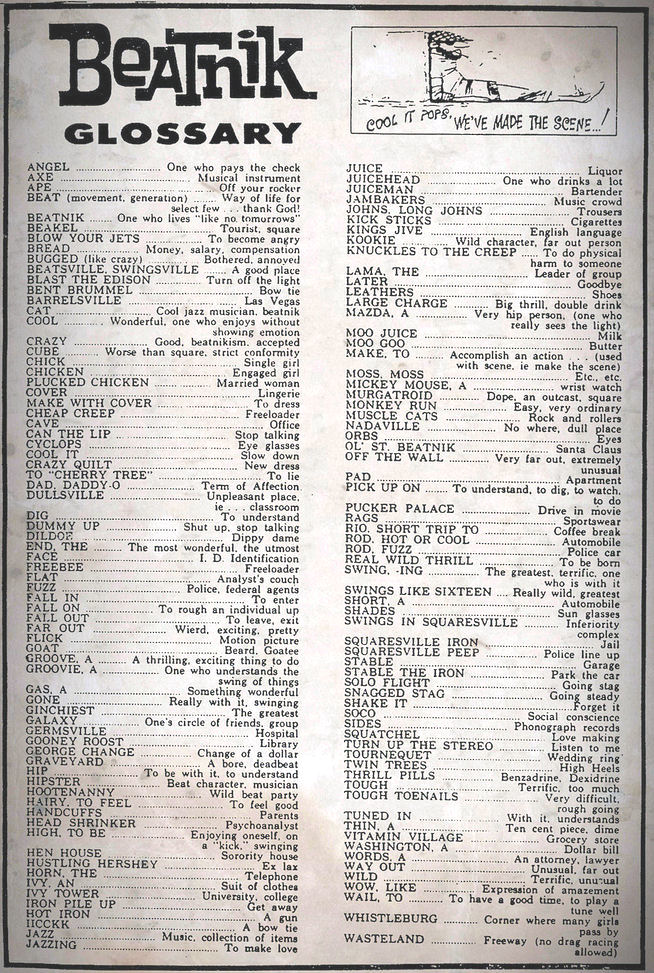 Every small town had a group of creative kids that, try as they might, could not take delight in praising the emporer’s new clothes. In my town we named our group Lambda Sigma Delta. (Get it?)
Every small town had a group of creative kids that, try as they might, could not take delight in praising the emporer’s new clothes. In my town we named our group Lambda Sigma Delta. (Get it?)
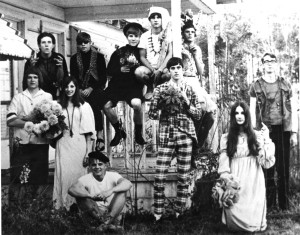
 High school sororities and fraternities dogmatically controlled the teenage society of our town. They were the football players and their rah-rahs who felt high school football was the center of the universe and Heaven was involved with the Dawgs or Bear Bryant. Anyone not so athletically inclined was fair game for abuse since they were obviously of an inferior species that did not live football. Social organizations had emerged that were thinly veiled efforts to rub it in to anyone not a member that they were losers. Two small town-snob, pseudo-debutante clubs prevailed. The college Greek system run wild at a petty level.
High school sororities and fraternities dogmatically controlled the teenage society of our town. They were the football players and their rah-rahs who felt high school football was the center of the universe and Heaven was involved with the Dawgs or Bear Bryant. Anyone not so athletically inclined was fair game for abuse since they were obviously of an inferior species that did not live football. Social organizations had emerged that were thinly veiled efforts to rub it in to anyone not a member that they were losers. Two small town-snob, pseudo-debutante clubs prevailed. The college Greek system run wild at a petty level.
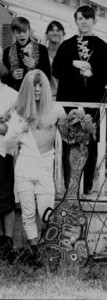
Many kids in my area came from families that could not afford the accoutrements to buy their non-athletic child acceptance in these groups. Thus many people were caused great pain upon suddenly learning in the tenth grade that they weren’t good enough for some reason and had been blackballed. Girls excluded from both clubs were devastated.
Every yearbook each High School sorority put in a big picture of all their members dressed as Southern Belles arrayed on the manicured lawn of some antebellum style home that most resembled a mansion and wasn’t a funeral home. Beneath the big picture was a picture of the club officers, the most socially successful. The listing of officers immortalized the social pecking order for the year.
At this memorable Happening party the a plan was created as a kind of performance art for the less than socially acceptable among us. Create our own sorority, since they said the guys all looked like girls, and name it Lambda Sigma Delta as a satiric jab to the prevailing society in school.
We could buy an “ad” to picture our entire group and immortalize the out group. The title would say, “Lambda Sigma Delta – We love you!” We decided to get a bunch of freaks of both sexes dressed in wild costumes on the porch of a ramshackle shack that needed one good push to settle back into the weed covered ground. Our names would be listed. We had a small reproduction of the same picture with bizarre official-sounding titles, mostly in-jokes, made up for all members. One I remember was Theron O. Odlaug’s keeper. Mr. Odlaug had written the manual we used in Advanced Biology to dissect a fetal pig.
Ads cost money. We got an understanding teacher as sponsor, and registered as a school club. We could then automatically qualify for a space at the Tiftarea County Fair and automatically win an honorarium if we completed our exhibit.
So there among the spaces set apart by chicken wire was our abomination among the champion hogs and jellies and the “Candy Stripers Salute to Progress”. We had built a swing in the middle of a large space and covered it and the ground beneath with real, artificial, and paper flowers of every hue. In the background were large letters in a style that has come to be called psychedelized. They said, ” We Love You! Lambda Sigma Delta”. Very colorful and unusual, but positive. How horrible!
They didn’t get it. We outraged the local American Legion County Fair. People threatened to never come to the fair again or to remove their livestock or preserves from judging or to even withdraw their own exhibit.
Apparently we were somehow more dangerous to the community morals than the semi-hidden gamblers and the hootchi-koo and moonshine being somewhat discretely consumed at night in the fair. Brown butcher paper was strung to hide our disgrace from a view and we were warned we had two hours to remove this outrage.
The ignorance motivating our community leaders dismayed, but did not surprise us; they were fighting a rear guard action against civil rights and now had white kids acting crazy, too!
Fred and I had earlier appeared before the school board to ask about refining the length of hair acceptable in the school dress code. We had help from the ACLU and had prepared a well- reasoned and logical case, which we presented. Then the father of a friend slid back in his chair and said, “Tell me boys, what is your present affiliation with The American Nazi Party?” Hair touching your collar makes you a Nazi?!
Despite their anger, being a registered school club that had actually completed an exhibit, we automatically received an honorable mention and $25 for bringing this shame on the fair. This was the down payment for the ad. Sympathetic kids on the yearbook staff had told us the yearbook would come out and we would all be gone then the books would be closed as every year.
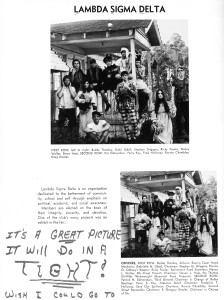
Now our ad was in the yearbook. When it came out, no one got it or the name; they wanted us expelled as communists. But somehow all the Senior pictures were correct except Fred’s was missing and mine had the name switched with a girl. We were told social leaders had done it since our page was already at the printers. Ten years later at a reunion I had people tell me they were still glad they had ripped that page out of their annuals at the time.
Our most heinous crime, for which there were murmurs to have us all expelled, was collecting wild flower bouquets and giving them to all the faculty members with little cards saying ” We Love you! Lambda Sigma Delta”. Shades of Stranger in A Strange Land! Teachers complained that this Love-thing was getting out of hand. Seemingly they preferred the prevailing attitude that any teacher not a coach must be a loser or a homo or something, to people appreciating what they were trying to do. Even today, as a teacher myself, I really can’t figure that one out…
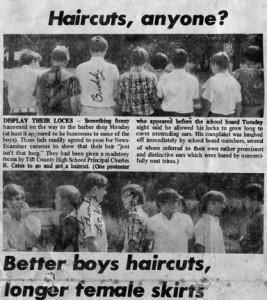
People were sure we were on drugs but most failed to even decipher the initials of our group, which we proudly wore in the form of Greek letters like a fraternity. Yet the name only signified a searching of attitudes; we mostly did not even smoke cigarettes, were one of the few groups that were mostly non-drinkers, and Gabi was yet to be offered the first joint I had ever heard of.
But in Atlanta Pixie had heard about Morning Glory seeds and had told Tommy. A chemist had told her they contained the same natural alkaloids that made up L.S.D.; real Flower Power. The summer before I started college she and Tommy decided to buy several packages of Morning Glories with spacey sounding names. (Now they coat the seeds in poison so you can’t do this without planting the seeds and waiting a season to collect more, but then you have them for ever, and the flowers.)
They ground the seeds into a powder and drank it in a milk shake. Gabi and I watched over them. At first I got really scared that all my worst fears would be realized when they both began to complain of terrible stomach cramps. They began to look pale and sickly. I was worried they might die; until they threw up. I figured it was out of them now like getting your stomach pumped. They both began to smile beatifically. We walked around with them as they giggled a lot and said strange things. It was weird but kind of a let down from the weird things I had had expected from what we had heard and read about L.S.D. They had made it sound like the whole world should see your hallucinations or something!
It took Philip K. Dick to bring that scenario to fruition.
2010 lambdas –

RIP Ronnie Chambley 7-15-2014
